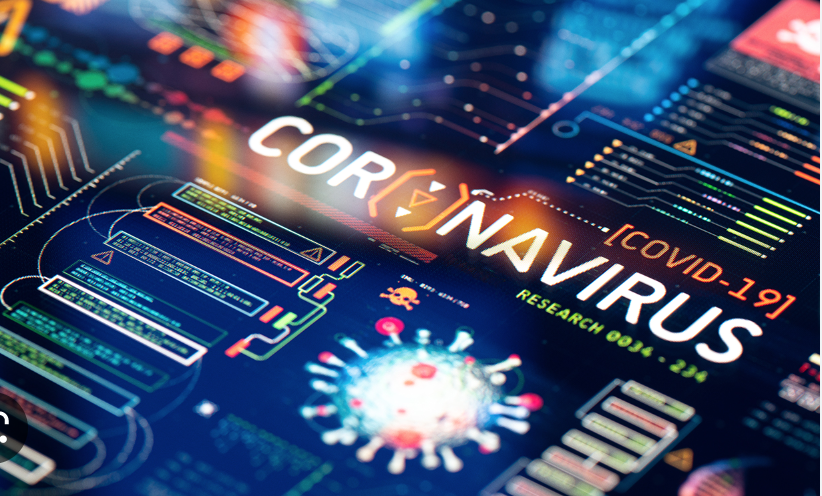“Unleashing the Power of AI to Beat COVID-19!”
Introduction
The COVID-19 pandemic has presented an unprecedented challenge to the world and has caused immense disruption to our everyday lives. In response, researchers have been turning to emerging technologies, such as Artificial Intelligence (AI), to develop innovative solutions to combat the pandemic. AI has the potential to revolutionize the fight against COVID-19, from helping to identify potential new treatments to predicting the spread of the virus and tracking contact tracing. AI can also be used to help evaluate the effectiveness of existing treatments, ensure the safety of healthcare workers, and develop better strategies for public health. This article will explore how AI is being used to fight the pandemic and the potential benefits of this technology.
How AI Is Helping Scientists Develop Vaccines and Treatments for COVID-19
The ongoing novel coronavirus pandemic has caused widespread devastation across the globe, and medical experts have been working tirelessly to develop treatments, vaccines, and other solutions to combat the virus. Artificial Intelligence (AI) has been playing a crucial role in this endeavour, providing an unprecedented level of accuracy and efficiency in the development of novel treatments and vaccines.
AI has been used to analyse large datasets of genomic data to better understand the virus and its mutations, as well as to identify potential drug candidates that could be used to treat the disease. AI algorithms have been used to quickly detect and classify the virus, enabling scientists to diagnose patients quickly and accurately. AI has also been used to analyse the structure and behaviour of the virus, helping to improve the design of vaccines and treatments.
In addition, AI has also been used to streamline the drug discovery process. By leveraging AI algorithms, scientists are able to identify potential drug targets and rapidly test them for efficacy. AI-assisted drug discovery has drastically reduced the amount of time needed to bring drugs to market, significantly speeding up the development of treatments for COVID-19.
The power of AI is also being applied to clinical trials. AI algorithms are used to quickly identify and recruit participants for clinical trials, as well as to track the progress of the trials and analyse the results. This allows researchers to better understand the effects of treatments and vaccines, enabling them to make more informed decisions about the best course of action.
AI has been instrumental in the fight against COVID-19 and will continue to play an important role in the development of treatments and vaccines. By taking advantage of AI technology, scientists can work faster, more efficiently, and more accurately, ultimately leading to much needed solutions for the global pandemic.
Using AI to Predict and Monitor the Spread of the Coronavirus
The coronavirus pandemic has had an unprecedented impact on the world, and the need to predict and monitor the spread of the virus has never been greater. Fortunately, artificial intelligence (AI) technology can help us to better understand and respond to this global emergency.
AI can be used to predict and monitor the spread of the coronavirus in several ways. For example, AI can be used to analyze the data around the virus: such as the number of cases, the geographic spread, and the rate of transmission. AI can also be used to track the behaviors of people who may have been exposed to the virus, such as travel patterns, social media activity, and other indicators. By gathering and analyzing this data, AI can help us to better understand the spread of the virus and anticipate where it may go next.
AI can also be used to create predictive models that can help public health officials to anticipate the possible outcomes of the pandemic. By using AI to analyze data from medical records, the models can help officials to predict the potential impact of the virus on public health and identify areas that may be at risk for increased transmission.
AI can also be used to inform our response to the virus. For example, AI can be used to identify potential interventions, such as contact tracing, that can be used to contain the spread of the virus. AI can also be used to monitor the effectiveness of these interventions, allowing public health officials to adapt their response as needed.
Finally, AI can be used to support public health communication efforts. AI-powered chatbots can be used to provide accurate and up-to-date information about the virus to the public, which can help people to make informed decisions about their health and safety.
Overall, AI can be an invaluable tool for predicting and monitoring the spread of the coronavirus. By leveraging the power of AI, we can gain valuable insights into the virus and help to better protect ourselves and our communities.
Leveraging AI to Facilitate Contact Tracing for COVID-19
The coronavirus pandemic has upended the lives of many individuals and businesses around the world. As the number of confirmed cases continues to climb, contact tracing has become an increasingly important tool for controlling the spread of the virus. Fortunately, new technologies such as artificial intelligence (AI) are emerging to help facilitate contact tracing.
AI enables contact tracers to quickly and accurately identify individuals who may have been exposed to the virus. By leveraging AI, contact tracers can quickly access and analyze large volumes of data from a variety of sources, such as healthcare records, travel history, and social media activity. This information can then be used to create a detailed contact map that identifies the contacts of an infected individual.
AI can also be used to ensure that contact tracers are able to quickly and accurately notify exposed individuals. AI-based systems can be used to automate the process of sending out notifications via phone, text, or email.
In addition to helping contact tracers quickly identify and notify exposed individuals, AI can also help to reduce the burden on contact tracers by automatically handling routine tasks such as tracking follow-up calls and managing case management. AI-based solutions can also help contact tracers to quickly respond to questions from exposed individuals, ensuring that they receive the information and support they need.
By leveraging AI to facilitate contact tracing, we can help to reduce the spread of the virus and ensure that individuals remain well-informed and supported. AI-based solutions can help contact tracers to quickly and accurately identify and notify exposed individuals, while also reducing the burden on contact tracers by automating routine tasks. In this way, AI can play an essential role in helping to control the spread of COVID-19.
How AI Is Being Used to Help with Early Diagnosis of COVID-19
The world is facing a pandemic like never before with the spread of Covid-19, and medical professionals are racing to find solutions to detect, diagnose, and treat the virus quickly and effectively. Artificial Intelligence (AI) is at the forefront of this effort, as researchers and medical professionals look to the technology to help with early diagnosis of the virus.
AI algorithms are being used to identify patterns in data that could be used to determine an individual’s risk of having the virus. AI can be used to analyze an individual’s medical history, their symptoms, and even their genetic information to detect if they may be infected. AI can also be used to rapidly process and analyze large amounts of data, enabling medical professionals to gain a better understanding of the virus and how it spreads in order to develop targeted treatments and preventative measures.
AI can also help to detect changes in the patient’s vital signs, such as temperature and heart rate, which can be used to help predict the onset of the virus. AI-enabled devices can help to monitor a patient’s health, alerting medical professionals if any changes in vital signs occur, allowing for early detection of the virus.
AI is also being used to detect patterns in images from X-ray scans and CT scans, which can help to diagnose the virus earlier on. AI algorithms can detect signs of inflammation and other abnormalities that may indicate infection.
AI is proving to be an invaluable tool in the fight against Covid-19 and is helping to ensure that medical professionals are able to detect, diagnose, and treat the virus quickly and accurately. It is also helping to ensure that individuals are able to receive the proper treatment they need in order to recover from the virus, and ultimately help to prevent the spread of the virus.
Evaluating the Potential of AI-Powered Robots for Delivering Medical Supplies During the Pandemic
The pandemic has put immense pressure on medical care systems all over the world. In many cases, the traditional supply chain of medical supplies has broken down, leading to shortages of essential equipment and medications. In this context, artificial intelligence (AI)-powered robots offer an intriguing potential solution to help ensure that medical supplies are delivered efficiently and in a timely manner.
AI-powered robots are already being used in different applications such as navigation, navigation path-planning, and task automation. For medical supplies delivery, AI-powered robots can be programmed to self-navigate to the destination, identify the medical supplies needed, and avoid obstacles and hazardous environments. Furthermore, AI-powered robots can be used to autonomously detect and identify medical supplies, allowing for accurate and efficient delivery of the right item in the right quantity.
These robots can also be used to monitor the supply chain in real-time, providing valuable insights into the current state of the medical supplies. This will allow medical staff to better manage inventory, anticipate any potential shortages, and take timely action. Additionally, AI-powered robots can be used to ensure the safety and security of medical supplies by recognizing and alerting on any unauthorized access.
While AI-powered robots offer many advantages for medical supplies delivery, there are still many challenges that need to be addressed before these robots can be widely deployed. For instance, AI-powered robots must be able to handle difficult, dynamic, and uncertain environments while navigating to their destination. Also, AI-powered robots must be designed to be cost-effective and resilient to ensure that they can be used in a wide variety of scenarios. Moreover, regulatory and privacy issues must also be considered when deploying AI-powered robots for medical supplies delivery.
Overall, AI-powered robots can be a powerful tool for medical supplies delivery during the pandemic. By providing fast, reliable, and secure delivery of medical supplies, AI-powered robots can help ensure that vital medical equipment and medications are available to those who need them the most. With the right development and research, AI-powered robots can become a key component of the medical supply chain and help reduce the strain on medical systems during this difficult time.
Conclusion
In conclusion, Artificial Intelligence (AI) has proven to be a valuable asset in the fight against the COVID-19 pandemic. AI can be used to help detect and diagnose cases, identify outbreaks, and provide better insights into the virus and its spread. With its ability to process vast amounts of data and information quickly, AI can help us to better understand and control the virus. Although AI is not a cure-all or a panacea, it can be used to supplement existing strategies and provide valuable assistance in the ongoing battle against the pandemic.


